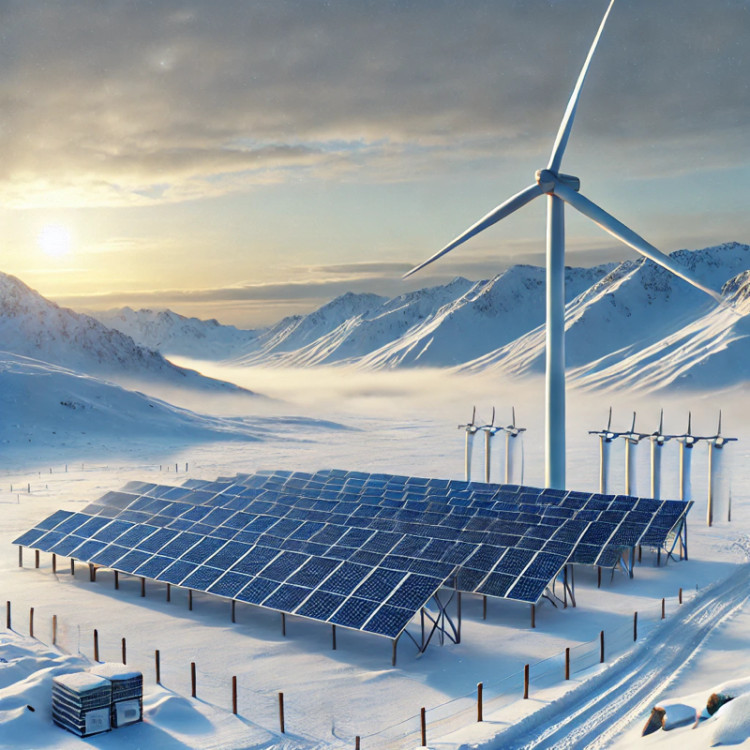Solar Panels in Alaska: Defying the Darkness
Alaska’s vast wilderness and breathtaking beauty come with unique environmental challenges, especially when it comes to harnessing solar power. With long, dark winters and snowy conditions, many wonder if solar panels are a worthwhile investment in the northernmost state. Surprisingly, with innovative solutions and Alaska’s unique summer advantages, solar energy can be both viable and beneficial.
The Challenges of Solar Energy in Alaska
1. Limited Daylight in Winter
In winter, areas like Barrow (Utqiaġvik) experience polar night, with no direct sunlight for approximately 65 days. While solar panels can still generate some electricity from ambient light during this period, the output is significantly reduced compared to sunnier months.
2. Snow and Ice Cover
Snow and ice can accumulate on solar panels, obstructing sunlight. However, light snow often has minimal impact, and snow’s reflective properties can enhance solar panel performance once the panels are clear.
3. Low Temperatures
Solar panels generally perform better in colder conditions due to reduced resistance in electrical conductors. However, extremely low temperatures may require system components like inverters and batteries to be designed for cold-weather performance.
4. Geographic Variation
Sunlight availability varies significantly across the state. Southern areas, like Anchorage, receive more consistent sunlight than northern regions. However, advancements in solar technology and energy storage are making solar power increasingly viable in northern Alaska as well.
The Benefits of Alaska’s Long Summer Days
1. Extended Energy Generation
During summer, Alaska experiences nearly 24 hours of daylight in some regions. This allows solar panels to generate energy for extended periods, significantly compensating for the reduced production during winter.
2. Maximizing Battery Storage
Abundant sunlight in summer provides an opportunity to store excess energy in advanced batteries. This energy can be used at night or during darker months.
3. Seasonal Compensation
Overproduction during summer months can reduce reliance on the grid and balance the energy deficit in winter.
4. Economic Savings for Off-Grid Communities
Remote Alaskan communities that depend on diesel generators for power can benefit greatly from solar systems, reducing reliance on costly fuel and increasing energy independence.
5. Environmentally Friendly
Solar energy’s sustainability reduces the environmental impact of energy production, aligning with Alaska’s focus on preserving its pristine wilderness.
Innovations That Make Solar Work in Alaska
Contrary to popular belief, solar panels operate efficiently in cold weather because they rely on light rather than heat. This means panels in Alaska can perform well when sunlight is available.
2. Low-Light Solar Panels
Advances in solar technology have led to panels capable of capturing energy in low-light conditions, making them more effective during Alaska’s shorter days.
3. Snow-Resistant Technology
Installing solar panels at steeper angles helps snow slide off, and some systems include heated panels or coatings to minimize buildup.
4. Hybrid Energy Systems
Combining solar power with other renewable sources, such as wind or hydroelectric energy, creates a hybrid system that provides a more reliable energy supply year-round.
Addressing Unique Energy Challenges in Alaska
1. Reducing Costs in Remote Communities
Many remote Alaskan villages rely on diesel generators. Solar energy can reduce fuel consumption, leading to cost savings and lower environmental impact.
2. Energy Independence
Solar panels, combined with energy storage solutions, enable rural households and isolated communities to become less reliant on external energy sources.
3. Environmental Impact
Transitioning to solar energy reduces greenhouse gas emissions and supports efforts to combat climate change while preserving Alaska’s natural beauty.
4. Job Creation
Training local workers in solar installation and maintenance supports renewable energy adoption and stimulates local economies, fostering sustainable development.
Jehovah’s Creativity in Renewable Resources
Solar energy is a testament to Jehovah’s ingenuity in designing a planet that provides renewable resources. As Jeremiah 10:12 reminds us, “He is the Maker of the earth by his power, The One who established the productive land by his wisdom And who stretched out the heavens by his understanding.” The ability to harness sunlight, even in challenging environments like Alaska, reflects the wisdom and foresight embedded in creation.
Sources
1. National Renewable Energy Laboratory: Solar performance in cold climates.
2. Alaska Center for Energy and Power: Renewable energy solutions for Alaskan communities.
3. U.S. Department of Energy: Challenges and innovations in solar technology.
4. Journal of Renewable Energy: Battery storage systems for extreme climates.
5. New World Translation of the Holy Scriptures: Jeremiah 10:12.
Thanks to John for the suggestion



0 Comments
Recommended Comments
There are no comments to display.
Join the conversation with your brothers and sisters!
You are posting as a guest. If you are already a member, sign in now to post with your existing account.
Note: Your post will require moderator approval before it will be visible.